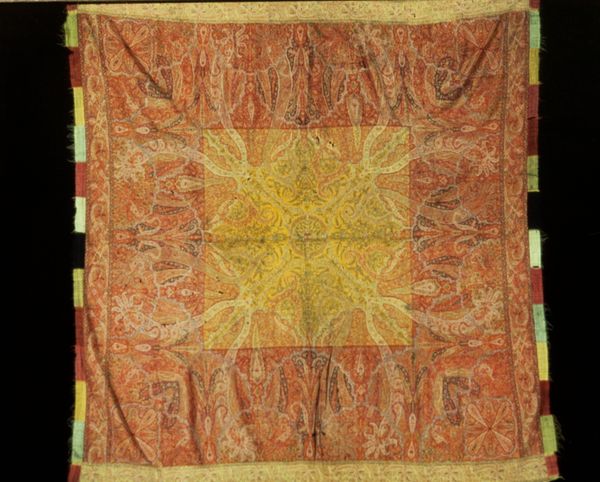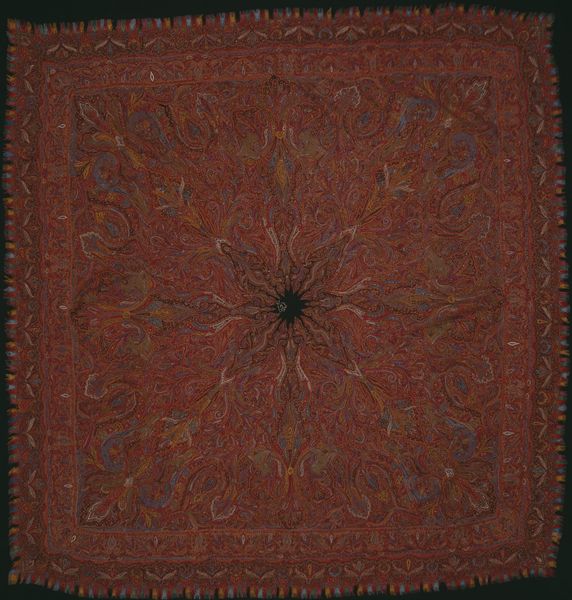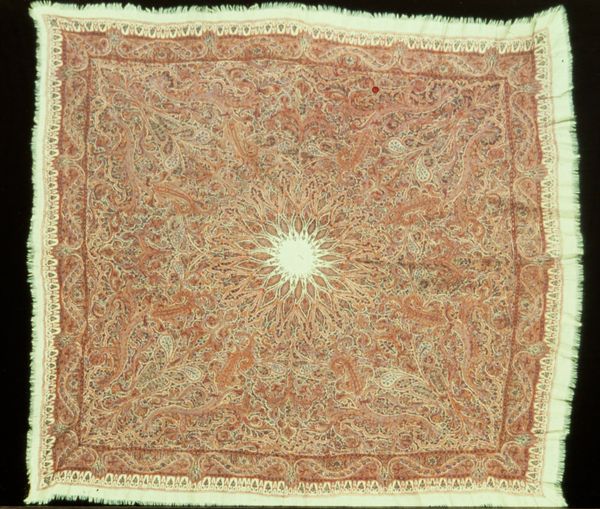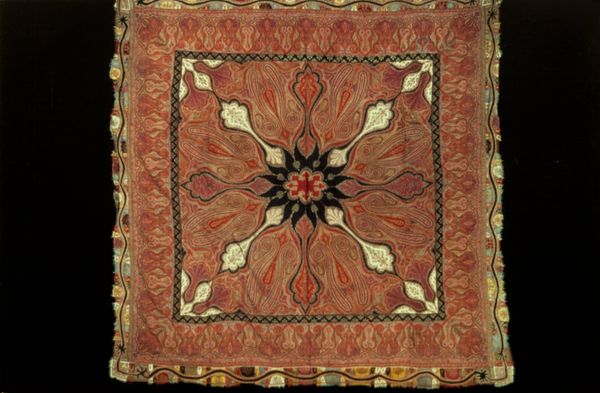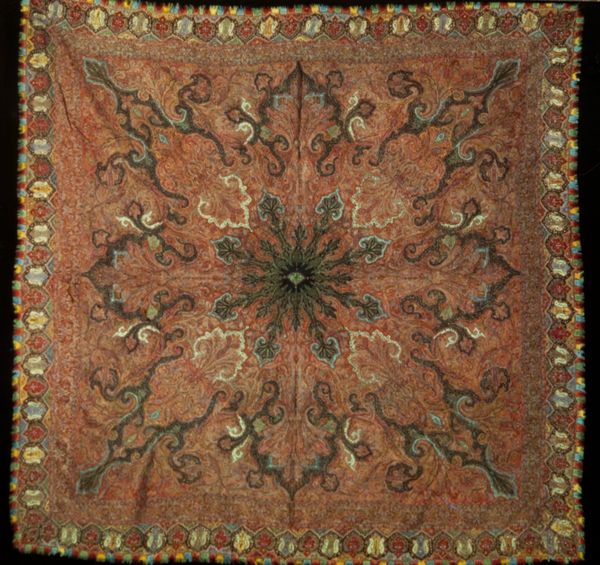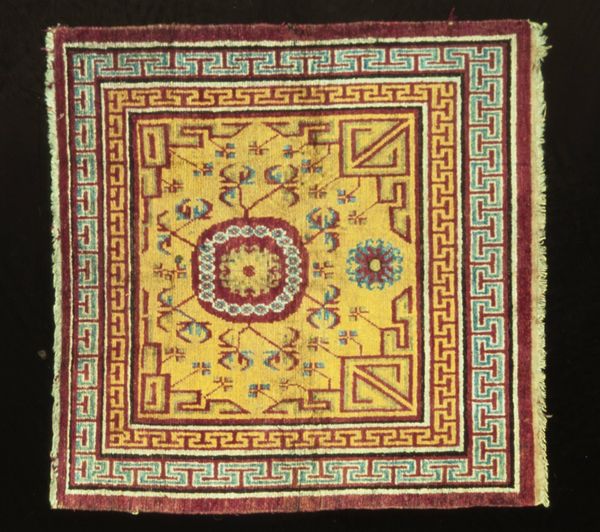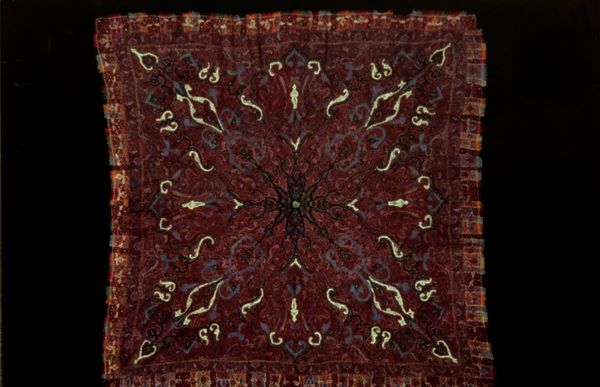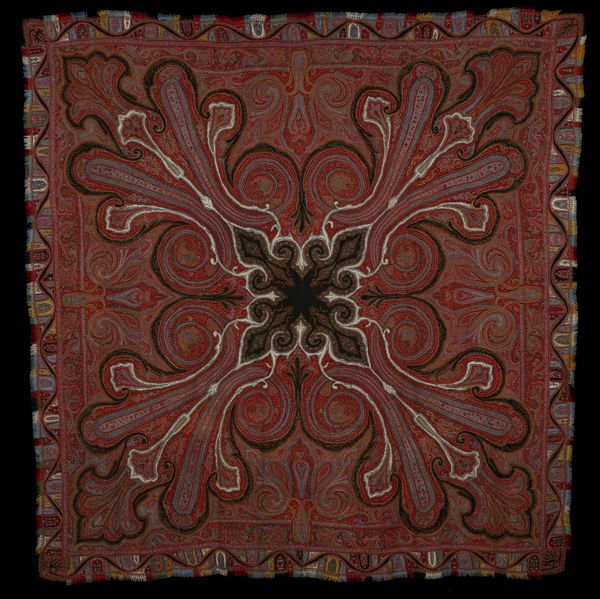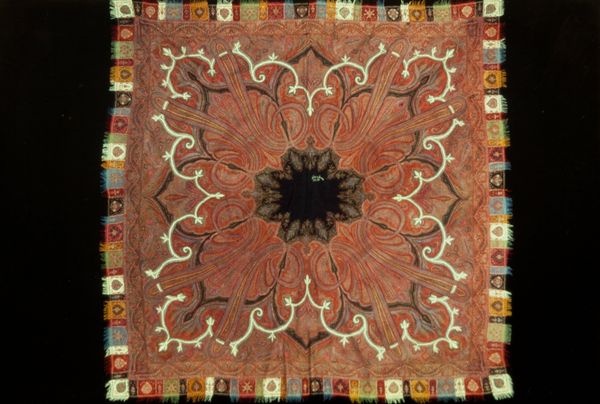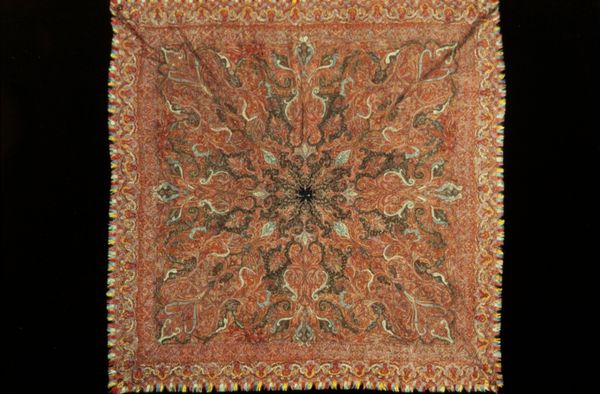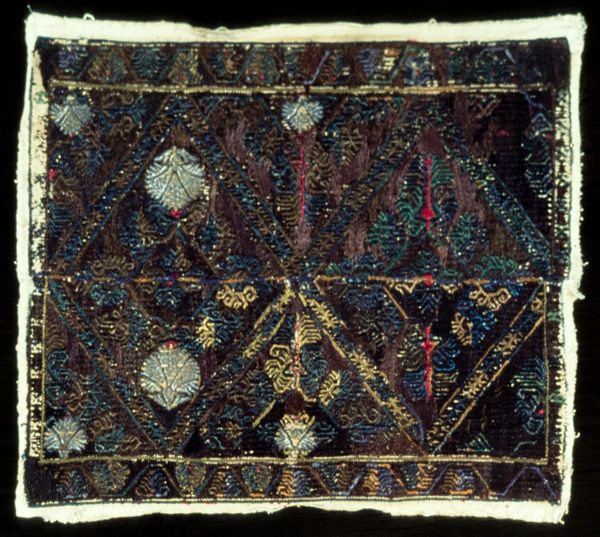
weaving, textile
#
weaving
#
textile
Copyright: Public Domain
Curator: I’m struck by the sheer intricacy. Looking at this square shawl from around the 19th century, the way the weaving seems to build out from the dark, almost portal-like center… It’s a bit mesmerizing. Editor: It feels very heavy to me, somehow. The density of the pattern and the muted color palette evoke a sense of weight and history. I’m curious, how were shawls like this produced? What labor was involved in achieving such detailed work? Curator: It's true. Shawls of this type became a status symbol across many cultures. This textile piece at the Minneapolis Institute of Art is a great example of what some classify now as "Pattern and Decoration", a movement which suggests deeper levels of understanding the visual arts and social expression. The use of repetitive motifs often speaks to collective memories and ingrained aesthetic values. Editor: The paisley motifs particularly stand out. Were those intended only as ornamentation, or did they hold a more specific cultural significance? And who had access to objects like this? It’s easy to forget that these beautiful textiles are often tied to exploitative labor practices, with workers spending countless hours under difficult conditions. Curator: Indeed. The paisley, thought to originate in Persia and later popularized in Kashmir, did become incredibly fashionable in the West as symbols of exoticism. You see their adaptation across fashion and design. But initially, certainly, these patterns represented more localized narratives, visual markers of origin and identity, interwoven with the land, like the ‘tree of life’ designs that signified fertility and growth. Editor: It’s interesting to think of this object as a point of convergence – where skilled artisanal labor met with elite desires, and where symbols could both preserve cultural meaning and become diluted by global trends. I keep picturing the workshop or domestic space where this was painstakingly made, the hands that shaped these threads. Curator: That reminds me of an interesting point on its geometric structure that radiates outward: It reflects cosmic diagrams seen in various traditions. In that sense, it’s like an embodied cosmology, portable and personal, reflecting interconnectedness. Editor: And the layers of appropriation and influence that this single object holds… From its place of origin, through colonial exchanges, to its current setting in a museum – it truly speaks to the complex networks of production, trade, and meaning-making that shape our world. Curator: It invites reflection on where objects and their meanings begin and end. Editor: Absolutely, there is always an interesting material biography that tells so much more.
Comments
No comments
Be the first to comment and join the conversation on the ultimate creative platform.

